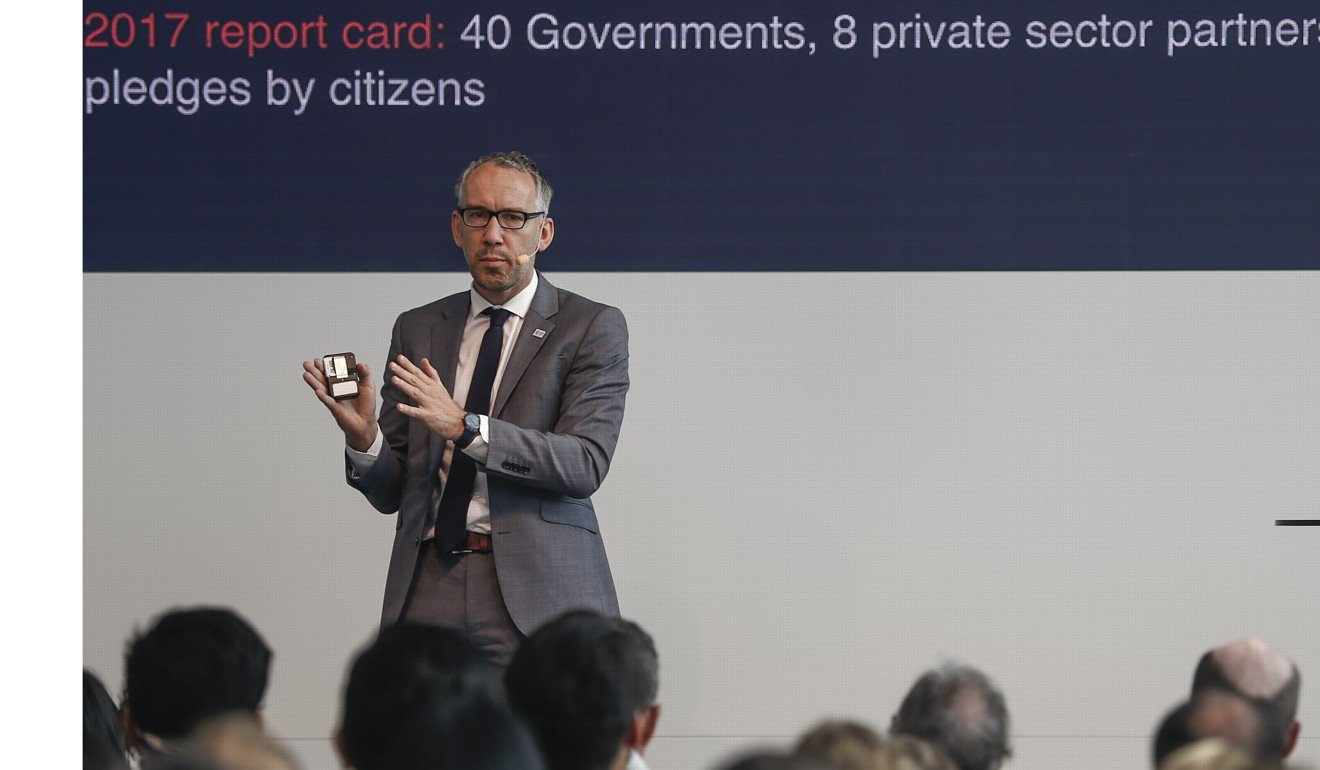
Hong Kong’s offshore plastic pollution worse than expected – Volvo Ocean Race crews spot waste far from land
City uses around 5.2 million one-use plastic waters bottles a day, while 15,000 tonnes of waste is collected from beaches each year
Sailors arriving in Hong Kong for the first time as part of the Volvo Ocean Race were fully expecting to see plastic in the water. Sadly, that goes with the territory when your destination is a modern metropolis situated right on the sea.
What surprised most was just how far out from land it was that the junk floating around had started to catch their eyes.
“They could see the murky waters a very long way out,” explained Anne-Cecile Turner, the Volvo Ocean Race’s sustainability programme leader. “It’s a mega-city with a huge amount of waste so it is a very big problem.”
But it is a problem that the Volvo Open Race is helping to tackle on the water, and off it.
Sometimes sport can be used to help turn the focus towards the more serious stuff and Monday saw Turner and her team hosting an Ocean Summit at the Kai Tak Runway Park. It gathered together concerned international officials, corporations, NGOs and individuals from around the world, as well as those closer to home, all of them trying to find ways to reduce the use of plastic which in turn would lead to less of the stuff ending up in the sea.

A recap on some of the figures being tossed around made for pretty depressing reading. Hong Kong uses around 5.2 million one-use plastic waters bottles a day, while 15,000 tonnes of waste is collected by the government from Hong Kong’s beaches each year. There are around two billion tonnes of plastic in use around the world today and by the year 2050 that figure will increase fourfold.
The Volvo Ocean Race brings a unique perspective on the full extent of the problem, given the round-the-world event charts a 38,739 nautical mile course across its 11 legs.
What they are seeing out there ain’t pretty and so the seven teams involved in this year’s edition of the historic race have been recruited to play an additional role as floating laboratories.

“All the boats contribute to the collection of data,” Turner explained. “There’s weather data and we are also launching drifters from the yachts which automatically collect information from the ocean.
And two of the boats – the British-based Turn the Tide on Plastic and the Dutch entrant Team AkzoNobel – are taking on data such as that on microplastics on-board the boat, by filtering the water.”
One of the main problems in local waters is what Paul Zimmerman, environmental activist and Southern District councillor, described as the “mystery of medical waste”, which has been washing up on our shores for decades but to this point no source has ever been discovered by the government.
Then there are all those one-use water bottles, concern for which will this week see the launch of a #NoSingleUsePlasticsHK campaign.

Once they end up in the sea they break down into microplastic, the prime component of the massive Great Pacific Garbage Patch – or Gyre - and a rather nasty recent addition into the global food chain.
The damage being done was, said Sam Barratt, chief of public advocacy and communications for UN Environment, “off the scale.”
“What we have seen with plastic is a crisis of imagination,” said Barratt. “People have failed to see the impact of the product. Industry needs to think more at what is to come.”
The positive Barratt took from the Summit was evidence of the activation of citizens, among them Canadian International School Year 12 student and activist Ellie Cottrell.
She pointed to that figure of 15,000 tonnes of local marine waste and said it just “shouldn’t be the normal.”

